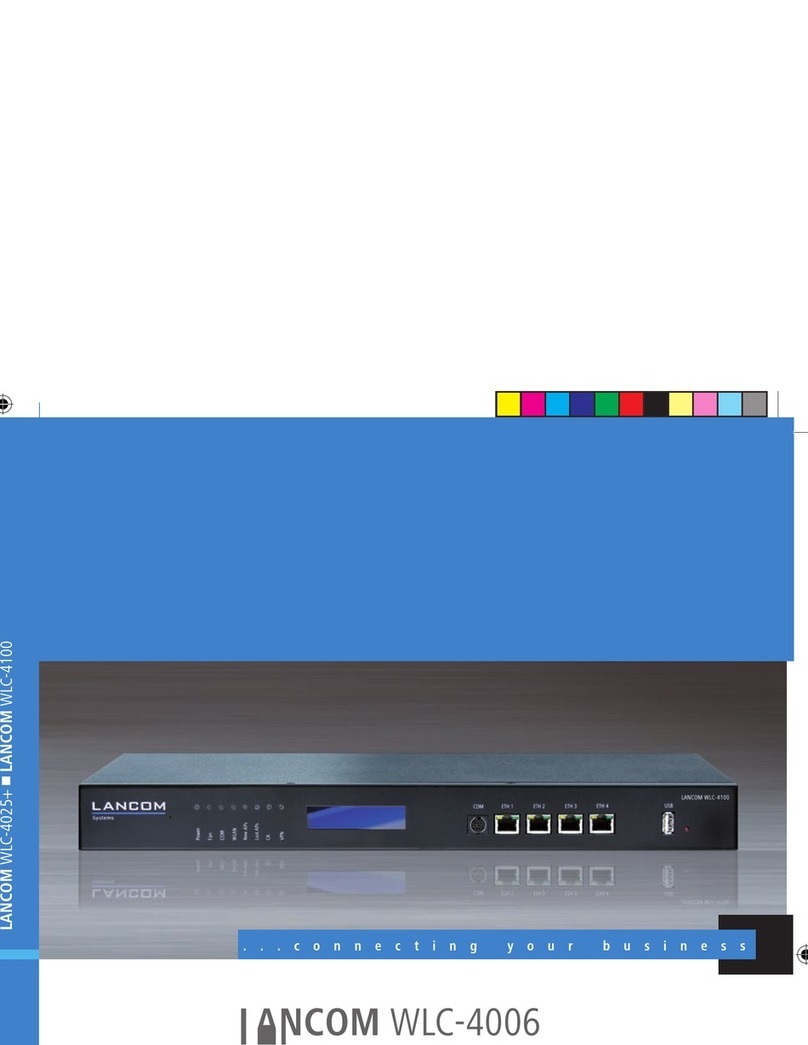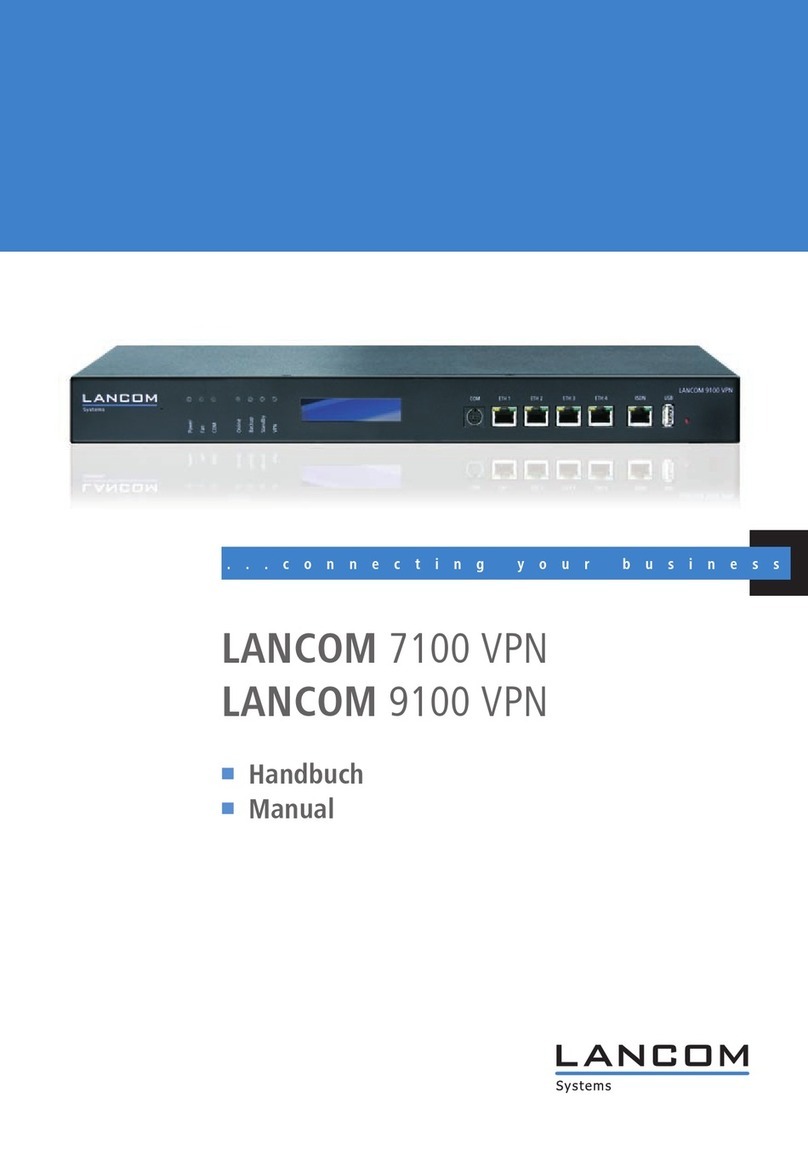
LANCOM WLC-4006 - LANCOM WLC-4025
Chapter 1: Introduction
10
EN
1Introduction
1.1 Centralized WLAN management
The widespread use of wireless Access Points and wireless routers has made
accessing networks in businesses, universities and other organizations con-
siderably more convenient and flexible.
Yet in spite of the numerous advantages WLAN infrastructures offer, there are
still a number of unsettled issues:
All wireless Access Points must be configured and require appropriate
monitoring in order to recognize unwelcome WLAN clients, etc. The
administration of the Access Points, especially for larger WLAN infrastruc-
tures with the appropriate security mechanisms, requires advanced qual-
ifications and experience on the part of those responsible, and it ties up
considerable resources in the IT departments.
The manual customization of the configurations in the Access Points when
changes are made to the WLAN infrastructure can be time-consuming,
with the result that different configurations can be present in the WLAN
at the same time.
Combined utilization of the shared communications medium (air) requires
effective coordination of the Access Points to avoid frequency interference
and optimize network performance.
Access Points in public places pose a potential security risk because the
devices themselves and also the security-related data in them, such as
passwords, etc., are susceptible to theft. In addition, rogue Access Points
may be able to connect to the LAN unnoticed, bypassing the security pol-
icies that are in place.
Centralized WLAN management is the solution to these problems. The config-
uration of the Access Point is then no longer carried out in the devices them-
selves but by a central authority instead, the WLAN Controller. The WLAN
Controller authenticates the Access Points and transmits the correct configu-
ration to the approved devices. This allows for convenient configuration of the
WLAN from a central point and the changes to the configuration affect all of
the Access Points simultaneously. As the configuration provided by the WLAN
Controller is generally not stored in the Access Point's flash memory but in
RAM, security-related data cannot fall into the hands of unauthorized persons
in the event that devices are stolen. Only in "self-sufficient" operation (’Self-
sufficient operation’ →Page 53) is the configuration optionally saved for a





























